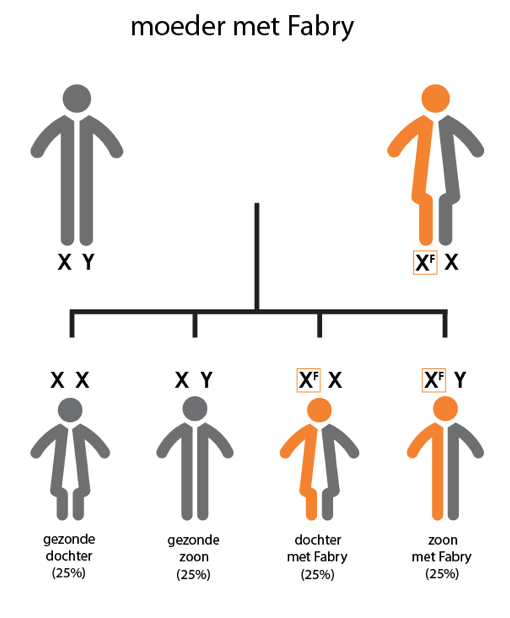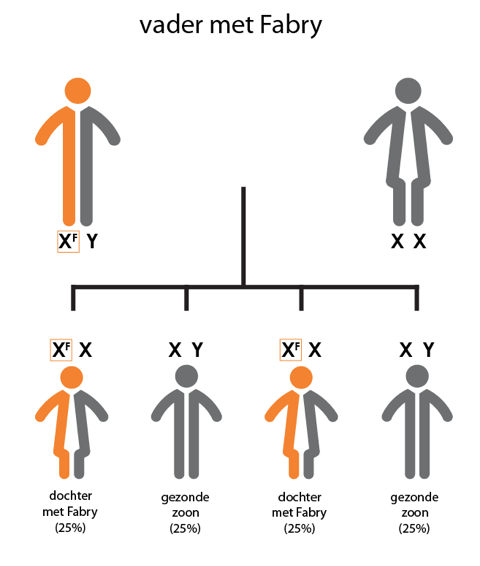How is Fabry disease inherited?
Fabry disease is a hereditary condition. The disease is rare and affects about 2,000 - 4,000 people worldwide. It is an X-linked recessive condition, which means that the defective gene is on the X chromosome. To understand this better, it is useful to understand something of genetics. We all inherit an X chromosome from our mother and an X or Y chromosome from our father. If we inherit an X chromosome from our father, we are female (XX), and if we inherit a Y chromosome from him, we are male (XY). The gene that causes Fabry disease is on the X chromosome and thus both men and women can have this gene (since they both have at least one X chromosome).
Since the only copy of the gene that men have is defective, they will transfer the gene to all their daughters and to none of their sons. Since women have one defective gene and one normal gene, each pregnancy has a 50% chance of transferring the gene to both male and female children.
Women with Fabry disease are often described as carriers, suggesting that they do not have the symptoms of Fabry disease themselves. That is not true. Like men, women with the affected chromosome also have Fabry disease, but they often develop the symptoms later.
Inheritance pattern for Fabry disease
Affected mother
Women with the defective gene (called "carriers") have a 50% chance (with every pregnancy) to transfer the defective gene to their children.
Affected father
Men with the defective gene will transmit the disease to all their daughters. Men do not transfer the disease to their sons
Who is in danger of inheriting Fabry's disease?
Fabry disease can affect anyone who inherits the defective gene; that is, both men and women of any ethnic group. The extent to which a person has to deal with the symptoms of Fabry disease depends on the amount of Fabry enzyme (α-galactosidase enzyme) they have. Women with the defective gene may have normal levels of α-galactosidase or (in rare cases) none at all, as well as everything in between. That is why women sometimes face the same symptoms as men, but not always to the same extent.
Fabry disease in the family
Fabry disease is hereditary and sex chromosome bound, so if one person in a family has the disease, other members of the family can have it. That is why it is important to make a family tree or medical pedigree. A medical genetic counselor can help you to map the inheritance pattern in your family on the basis of a medical pedigree. This can help you make informed decisions about family planning. A medical family tree can also help you understand how Fabry disease has affected family members, both the living and the dead.



